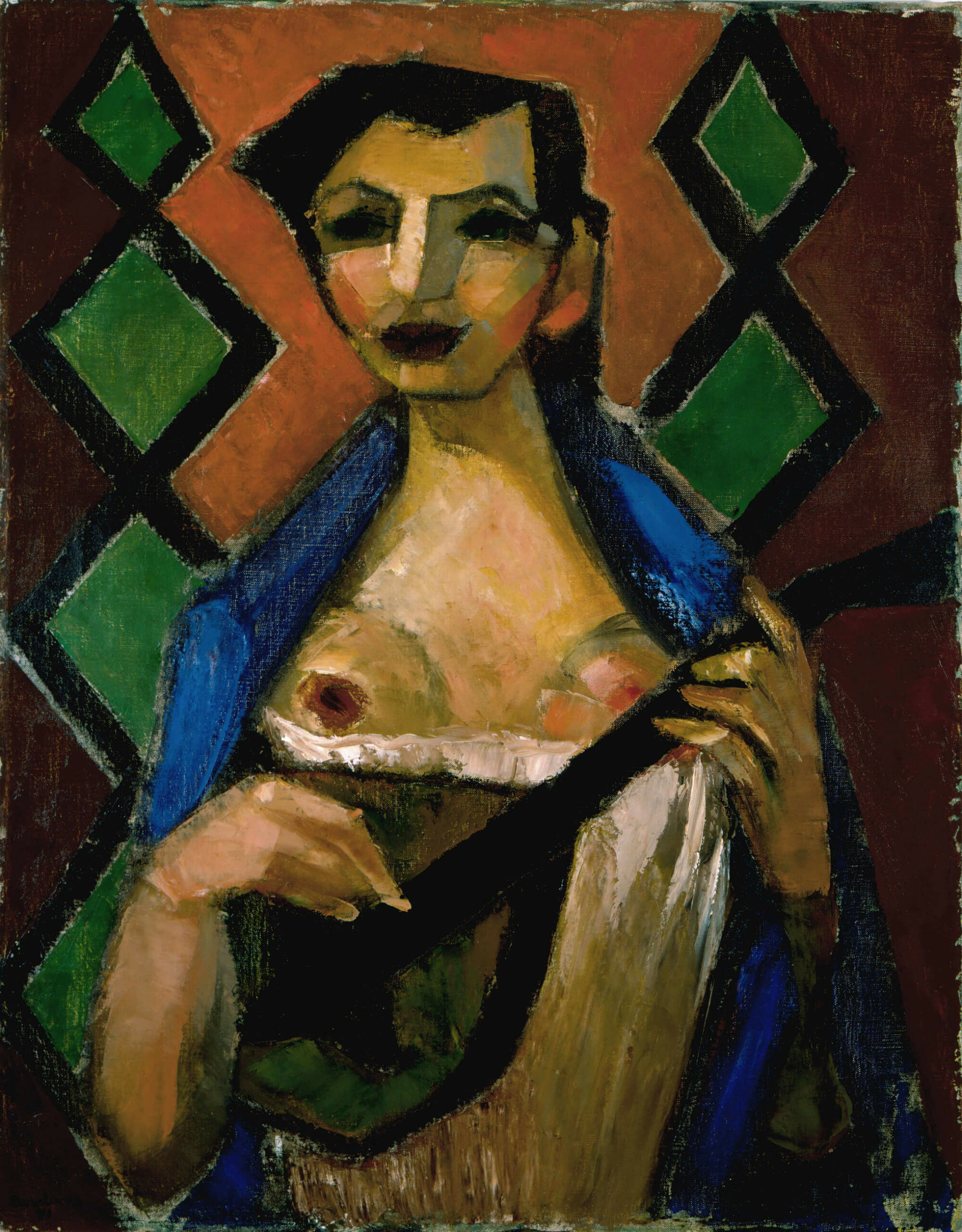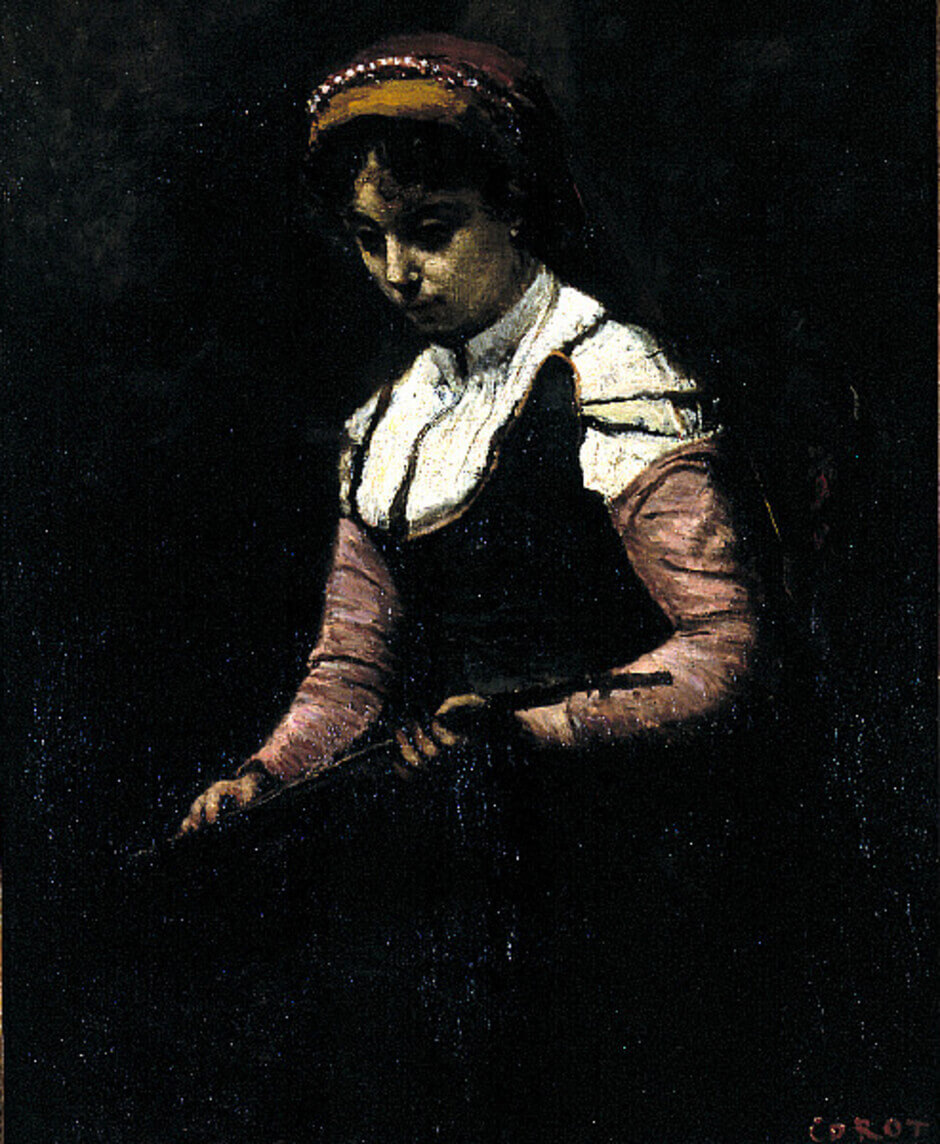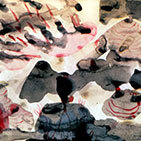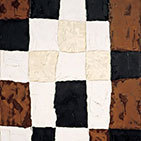Woman with a Mandolin 1941

Paul-Émile Borduas, Woman with a Mandolin (Femme à la mandoline), 1941
Oil on canvas, 81.3 x 65 cm
Musée d’art contemporain de Montréal

The subject of Woman with a Mandolin can easily be traced back to the Cubists. They, in turn, borrowed it from Jean-Baptiste-Camille Corot (1796–1875) but transformed it with the rigour of analytical Cubism. A version by Pablo Picasso (1881–1973), Girl with a Mandolin (Fanny Tellier), 1910, renders the subject in monochrome, with pictorial planes blending and collapsing, combining abstract frontal and profile views. Borduas’s painting does not go quite as far. He poses his wife, Gabrielle Borduas, and—by exposing her breasts—reveals the underlying erotic subject of the theme: a woman awaking to love by a man’s caresses, just as a mandolin emits music when it is strummed.
Borduas’s Woman with a Mandolin is a solidly constructed painting. The figure is placed in front of a ground featuring diamond shapes that set off the model’s face; the face is coarsely painted with a palette knife, whereas the rest of the canvas seems to be painted with a brush. Borduas would return to the subject of the mandolin in 1942 with a gouache titled No. 38 Mandolin, which was part of Pierre Elliott Trudeau’s private collection. In this later painting, however, only the musical instrument is represented, posed on the ground like a piece in a Cubist still life, demonstrating that Borduas had come to terms with Cubism, perhaps influenced by a major exhibition of the work of Alfred Pellan (1906–1988) at the Art Association of Montreal held the previous year. Borduas had his own exhibition in 1942, Oeuvres surréalistes de Paul-Émile Borduas, at the Ermitage. Years later in an interview, Borduas discusses the show: “The exhibition of gouaches in 1942, which we had assumed to be Surrealist, was nothing but Cubist. It took [us] five years to recognize it.”

 About the Author
About the Author
 More Online Art Books
More Online Art Books
 Acknowledgements
Acknowledgements